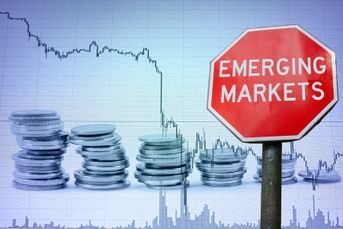How Vanguard pulls billions from Wall Street every year
While Washington has long been debating how to reform big Wall Street banks, Vanguard is quietly doing just that as the company and its army of index funds remove about $20 billion a year in revenue from the financial industry.
While Washington has long been debating how to reform big Wall Street banks, Vanguard Group is quietly doing just that as the company and its army of index funds remove about $20 billion a year in revenue from the financial industry.
So far in 2015, Vanguard is leading a record $365 billion in net flows into low-cost and passively managed index funds and exchange-traded funds, according to Bloomberg data. Meanwhile, the active mutual funds that constitute some of Wall Street’s best customers have lost $147 billion, according to the Investment Company Institute. That adds up to about a half-a-trillion-dollar swing so far in 2015, which will be the most ever in a year.
Vanguard’s take of this is a phenomenal $185 billion, or about 55% of the total inflow, which puts it on pace to bring in more money in one year than any asset manager in history, according to Barron’s. The rise of Vanguard and other passive managers comes at a time when Wall Street is under intense pressure to boost its collective profits.
(More: Advisers flocking to an ETF that costs more than a mutual fund)
Vanguard’s assets now stand at $3.1 trillion, which effectively means that this year alone it will have removed more than $16 billion from the financial industry just through fees. That figure is based on the average asset-weighted fee of a Vanguard fund of 0.13%, compared with the 0.66% average asset-weighted fee of an active mutual fund.
https://s32566.pcdn.co/wp-content/uploads/assets/graphics src=”/wp-content/uploads2015/11/CI102725121.JPG”
Of course, $16 billion is merely a dent for a financial service industry that generates approximately $200 billion a year in global trading and asset management revenue, per figures from Bloomberg Intelligence. But the dent gets bigger once it includes the “hidden fees” that active managers rack up from continuously tweaking their portfolios.
Active mutual fund managers are some of Wall Street’s best customers because they spend money through trading commissions and research as they attempt to outwit the market and turn over the securities in their portfolios.
On average, an active manager has turnover that is 10 times more than a Vanguard index fund, where average annual turnover is about 3% to 4%.* One extra percent of turnover translates to about an extra basis point in cost, equating to another $3 billion or so a year in lost trading revenue.
This $20 billion dent is only expected to grow larger. It took Vanguard 32 years to reach $1 trillion in assets, eight years to get to $2 trillion, but then just three years to get to $3 trillion. At this rate, Vanguard will be removing $40 billion in revenue each year from the financial industry by 2020, equivalent to a 20% hit to revenue based on today’s numbers.
But it gets worse, or better, depending on which side of the active vs. passive divide you stand.
Beyond Vanguard’s direct effect, there is also a revenue decrease caused by the so-called Vanguard Effect, which sees other funds lowering their fees to compete with the rock-bottom prices on offer from the company.
Like Walmart arriving in a new town, the entry of Vanguard into a particular investment area causes a collective gnashing of teeth as other fund managers are forced to drop their prices to compete. That dynamic is borne out in the table below, which shows the cheapest ETF fees for products that do or do not have a Vanguard-provided equivalent.
https://www.investmentnews.com/wp-content/uploads/assets/graphics src=”/wp-content/uploads2015/11/CI102726121.JPG”
All of which raises the question of how Vanguard manages to make its own profit in the face of ultra-low fees.
Vanguard’s ability to achieve extremely low costs can be traced back to the way founder John Bogle formed the company in 1975. He set it up as a “mutual ownership structure,” which basically means the shareholders are the fund investors. So while Vanguard does make profits, those profits don’t go to shareholders, they go back to investors by lowering fees. The foundation on which Vanguard is built is what makes it so different and ultimately gives the company its edge.
Until now, the asset numbers probably weren’t big enough to trouble Wall Street, but as Vanguard is now on pace to add a cool $1 trillion in assets every few years, it is effectively becoming a massive wealth transfer machine funneling money out of the financial industry and into individual investors’ accounts.
So how does this story end? Right now, passive products, such as index funds and ETFs, have about 30% of the $16 trillion in total investor assets, compared with active products, which still have 70%. If the balance of power were to shift firmly in passive’s favor, one might expect extra opportunities for stock- and bond-picking active managers to emerge, since there would be more inefficiencies in a market where the majority of investors are invested equally.
If active managers exploited those inefficiencies — a valuable role played by traders and portfolio managers — and outperformed the market, some money would inevitably move back to them.
So while Vanguard has enjoyed a stunning run in recent years, there are arguably natural limits to its dominance.
Still, the effects of Vanguard’s rise have been far-reaching on Wall Street, prompting fees to come down across the industry. It is a major reason why Vanguard is now pushing more reform on Wall Street than all the political rhetoric in the world.
*Of course, this applies only to Vanguard’s index funds, which account for about two-thirds of its total assets, or $2 trillion.
Learn more about reprints and licensing for this article.








